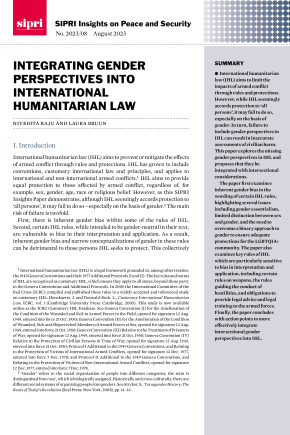Integrating Gender Perspectives into International Humanitarian Law
International humanitarian law (IHL) aims to limit the impacts of armed conflict through rules and protections. However, while IHL seemingly accords protection to ‘all persons’, it may fail to do so, especially on the basis of gender. In turn, failure to include gender perspectives in IHL can result in inaccurate assessments of civilian harm. This paper explores the missing gender perspectives in IHL and proposes that they be integrated with intersectional considerations.
The paper first examines inherent gender bias in the wording of certain IHL rules, highlighting several issues including gender essentialism, limited distinction between sex and gender, and the need to overcome a binary approach to gender to ensure adequate protections for the LGBTQIA+ community. The paper also examines key rules of IHL which are particularly sensitive to bias in interpretation and application, including certain rules on weapons, the rules guiding the conduct of hostilities, and obligations to provide legal advice and legal training to the armed forces. Finally, the paper concludes with action points to more effectively integrate intersectional gender perspectives into IHL.
I. Introduction
II. Inherent gender bias in IHL
III. Gender bias in the interpretation and application of IHL
IV. Conclusions


